I’ve written before about how much of a joke modern air forces truly are, with the USAF and most NATO countries exemplifying a certain “if you pretend bad things can’t happen, they can’t happen,” attitude. When most people think about fighter planes, they start thinking about tactical performance. You know, how fast they go, how many g’s of structural strength they have, or, god forbid, they buy into the bloviation about “muh stealth,” and pretend that any plane with some slightly higher frontal RCS simply explodes when coming within 200 nautical miles of an F-35.
In the very last article in this series I’ll get into tactical considerations, and how these modern planes actually suck there as well. However, as idiotic as discussions from armchair generals get, they are entirely irrelevant, because the strategic and operational performance of all modern US Fighter planes, and most other countries as well, is so spectacularly bad that it’s entirely unnecessary to ever fight them in the air in the first place.
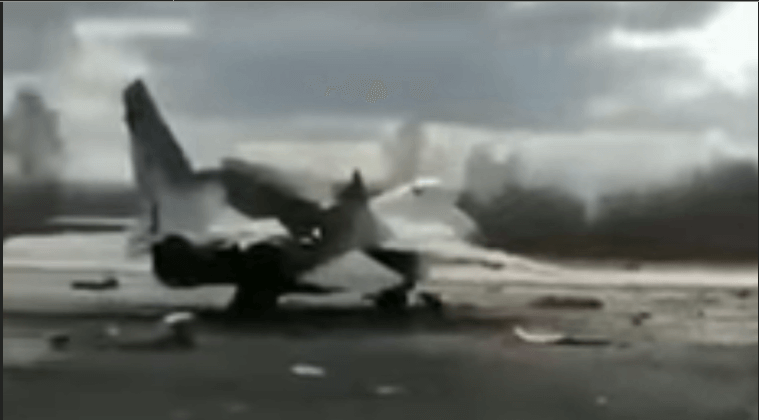
Ukrainian Mig-29 lying in pieces.
OPERATIONAL FAILURE: DESTROYING PLANES ON THE GROUND
Most of the time people don’t consider the importance of the airbase to the airplane. For naval operations it’s obvious that if you sink the aircraft carrier, all the planes on board are going down with it.
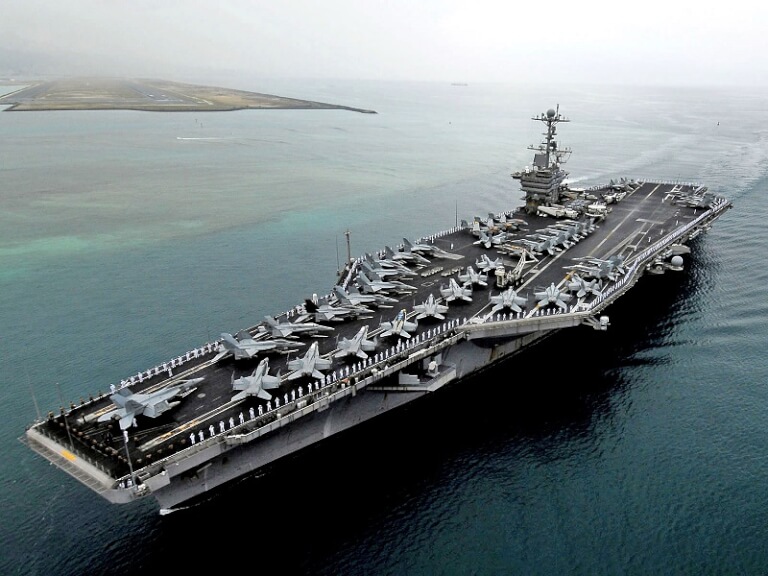
Yet for some strange reason people don’t seem to apply this very same logic to the airbases on land. Modern jet fighter planes are, with a few exceptions I’ll get to later, princesses which require long and entirely smooth concrete runways to take off and land from. Airbases which, by their very nature, cannot be hidden, cannot be disguised, and are therefore easily known to whatever enemy you are fighting. They can be easily destroyed by long range missiles with nuclear warheads, but frankly, even the conventional warheads appear to be doing the job just fine.
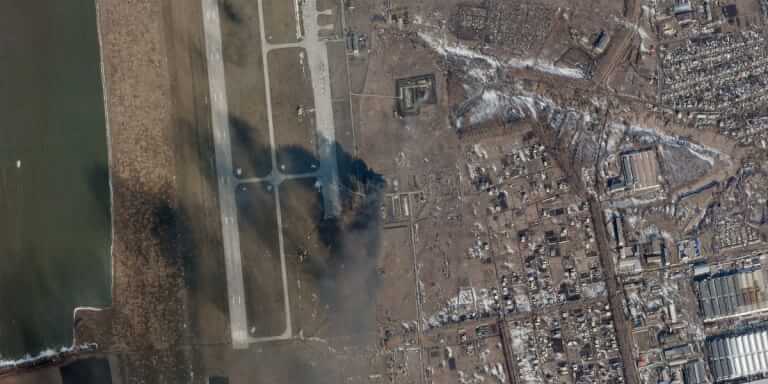
Ukrainian airbase smoking after Russian missile strike.
This is not some sort of theoretical concept. This is not me retreating to my bunker of autism and pouring through technical specifications before realizing “Great Scott, our airbases can be destroyed with long range missiles.” The Russians did this right at the start of this current war, and then stopped because the Ukrainian Airforce was already destroyed. Contrary to bullshit “Ghost of Kiev” propaganda, where Samuyii Hydekov downed 10 Russian Fighters on the first day, the Russian’s have only a single confirmed fighter plane not lost due to accident, an SU-30, which was destroyed not in air combat, but due to Ukrainian artillery strikes at Millerevo Airbase just across the Russia-Ukraine border.
Destroying airbases, and aircraft on the ground, is far older than that. In 1967 the Israeli’s destroyed almost 300 of Egypt’s 500 aircraft in a pre-emptive strike on Egyptian airbases in yet another terrorist action by the jew ethnostate. Regardless of the morality, my point is that destroying aircraft on the ground is really effective, and how any halfway competent military takes care of things.
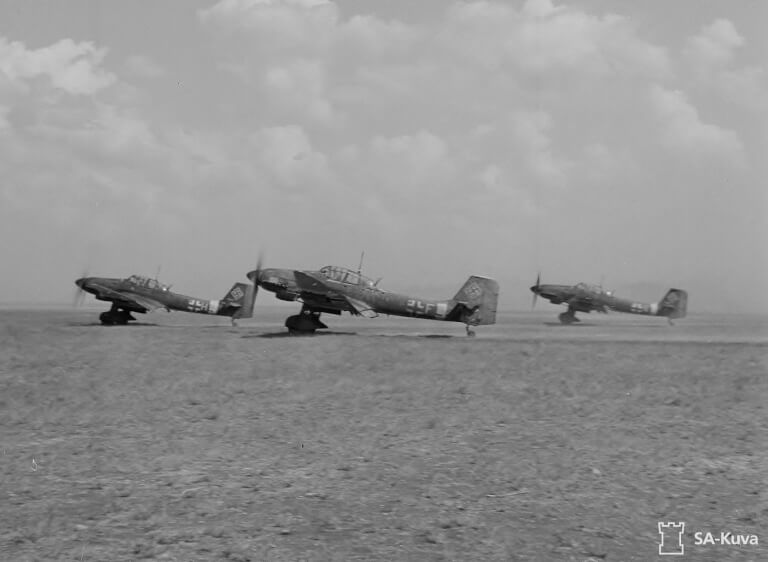
WW2 Airfield
In fact, this was an enormous problem even back in WW2, with one huge mitigating factor. Above we see a German airfield from WW2. You may notice that it is literally a field. This wasn’t unique to the Germans either.
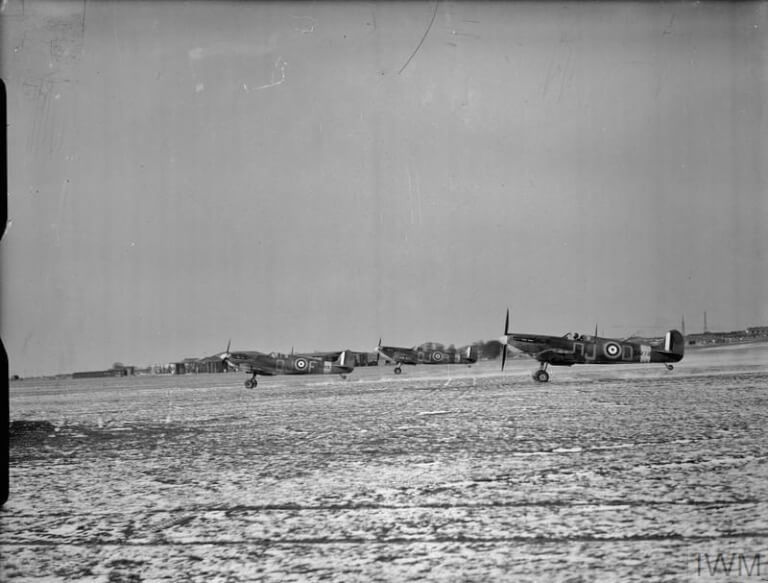
Here we see English fighters taking off from a field that also has a light dusting of snow. As you can probably imagine, destroying such an airfield is difficult in two ways. First, there’s not that much infrastructure to destroy. Second, they can just go to the next field over, now can’t they?
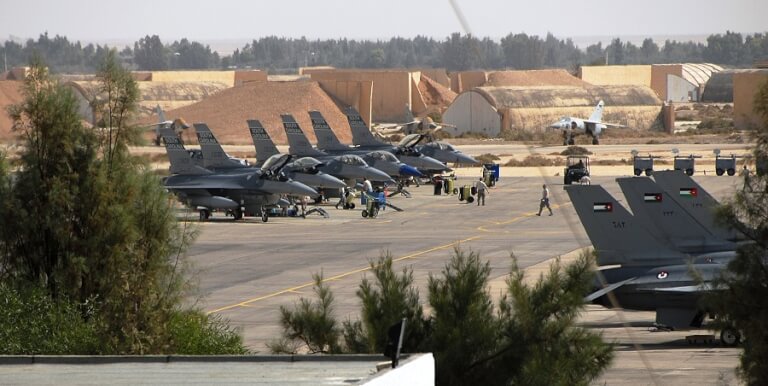
US Air Force base in Jordan.
Modern air force bases are a little different. This is not to say that WW2 armies didn’t enjoy concrete, built up airbases when that was available, but their fighter planes could take off and land from an enormous percentage of untreated land in their own countries. Clear some forest, and you’ve got a new WW2 airfield. Hell, just use some existing farmers field, of which there will be many thousands awaiting your planes.
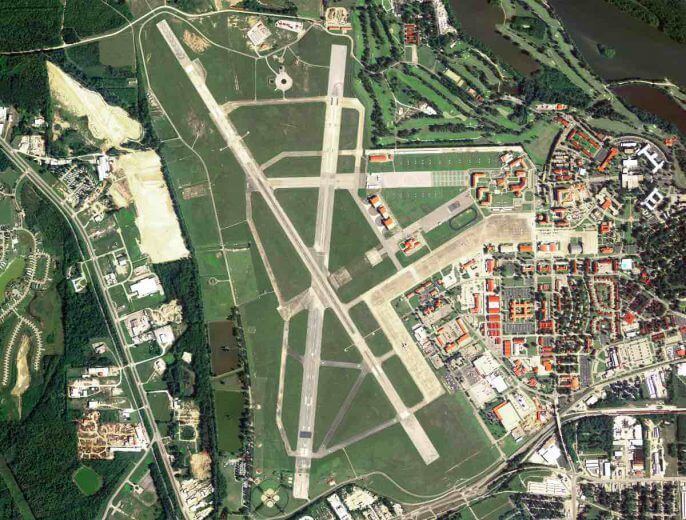
In contrast, this air force base can be completely destroyed, at least temporarily, by putting a single 10 ft divot in the middle of the runway. In the same way that an aircraft carrier can be rendered completely inoperable with damage to the catapults, or the runway itself, you can keep every single fighter plane at these bases grounded until the time it takes to bring in the construction crew and fix it.
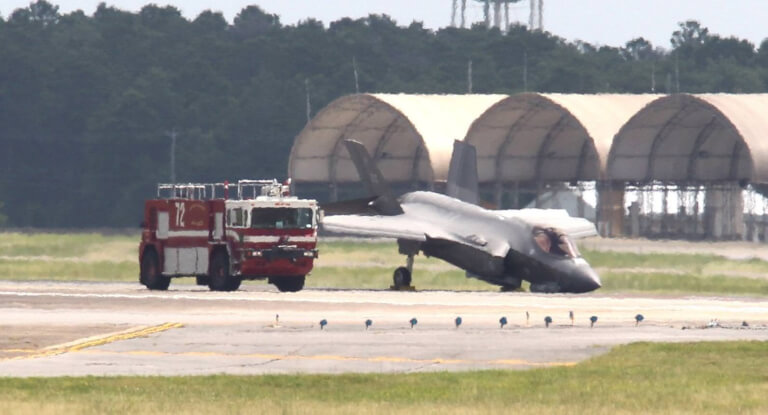
F-35 with collapsed nose gear
And of course, I skipped over the most classical way of destroying enemy airpower, which is just marching your army onto their airbases. In WW2, during the three week Battle of France, the Germans did not destroy French airpower by whittling down their fighter reserves in aerial combat. Instead, they just overran French airfields, as well as destroying the essential infrastructure required to protect them. Because you see, when Hans parks his Panzer on your airfield, it isn’t really yours anymore, now is it?

Now you might be thinking “so why don’t we just go back to using fields like the WW2 planes.” Unfortunately, it’s not so simple. WW2 planes are often thought of as being slower, and that’s true, but they also had better lift/speed ratios. For any given speed and altitude they could pull more lift, or more accurately, more g’s, since lift in the absence of weight is sort of irrelevant. There are a few implications to this, but the most relevant to this discussion is that they had lower takeoff and landing speeds than these modern jet fighters. Beyond that, since they were designed by actually serious people, they had rugged landing gear that could survive hard landings on rough fields.
Actually, to quantify that for you. In the absence of wind, all planes produce 0 lift at 0 speed. However, different planes have different takeoff speeds, which is the minimum speed, at sea level, where they can produce 1G of lift. For civilian planes like the Piper Cherokee I used to fly, that’s something like 100 kmph, even less with the flaps down. For fighter planes that’s more like 250 kmph. For these purpose built STOL airplanes, which are basically show airplanes, they appear to be taking off around 20kmph.
I included that video, because I want to show that lower takeoff and landing speeds also means less takeoff roll. This is entirely irrelevant when using some 10,000+ft runway on a pristine airfield that will be getting destroyed by long range ICBM’s in the first five minutes of WW3. However, it is extremely relevant when dealing with planes who, for practical purposes, may have to land and take off from fields surrounded by trees.
It’s not like it’s impossible to build a modern plane that is capable of short takeoff and landing (STOL). After all, the modified Piper Cubs do it, and the OV-10 Bronco above has more practical STOL performance, having good lift/speed, as well as extremely rugged landing gear. However, the design decisions that enable jet fighters to have high speeds, such as highly swept back and fairly small wings, supersonic airfoils, etcetera, are incompatible with the generation of high amounts of lift required for low speed takeoff and landing. Lift generated is roughly proportional to the square of the velocity in airspeed. For a fighter plane that is designed to cruise at 1100kmph, and fight at around 600-1500kmph, it doesn’t make so much sense to be able to take off at 100kmph. The thicker and wider wings that we would need to pull that off are simply extra weight and drag at those higher speeds.
Additionally, the turbojet engines, necessary for high speeds, have horrific fuelBurn/thrust ratios, and are very fragile to small particulate matter getting sucked into the intake. Absent foreign object debris (FOD) covers, they are vulnerable to any random pebble getting sucked into the intake and, in the worst case scenario, causing the engine to explode.
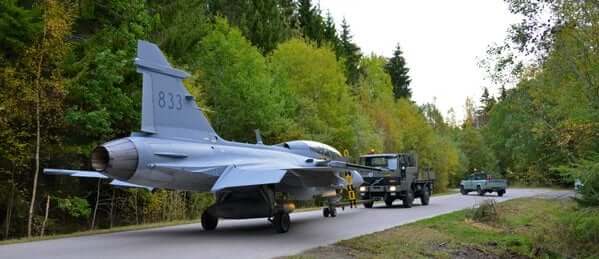
Swedish Gripen Fighter
While much of this is the unfortunate downside to turbojet engines and higher speed, it’s not necessarily true that any plane with a turbojet, or low bypass turbofan, and decent cruise/fighting speed is some strategically irrelevant princess that is utterly useless in a real war. The Russians build all their fighters to be able to take off from flat dirt fields, and made the sacrifices in terms of weight and internal volume to get the landing gear size and strength to do so. The Swedes back in the 70’s went one step further with their Bas-60 system. They built their fighters to be extremely small so they could land on any two lane road, and then built a redundant system of dispersed, pre-stocked airbases so that they could maintain operation even under nuclear bombing.
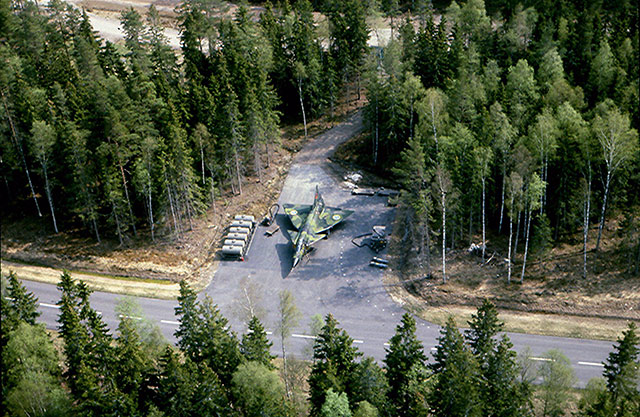
Viggen fighter at highway staging area. Notice the fuel tanks pre-supplied to the plane’s right.
It’s not hard to understand why this is so important. Imagine we have 1,000 fighter planes. If we stage them at 1 airbase, then 1 single missile strike and our entire fleet is gone. In contrast, if we have 1,000 airbases, then we would need 1,000 successful missile strikes to destroy it all. And it’s possible to build some very rudimentary protection that goes a long way, like the roof pictured below, or dirt embankments, that protect very efficiently against bomb blasts.

It’s even better than that, because these bases are so austere, containing little more than easily created shelter, and some fuel supplies and armament for a single fighter, that they can be built en-masse, in far higher numbers than necessary in peacetime. Beyond that, it’s far easier to construct these in secret, than it is constructing a massive traditional airbase.
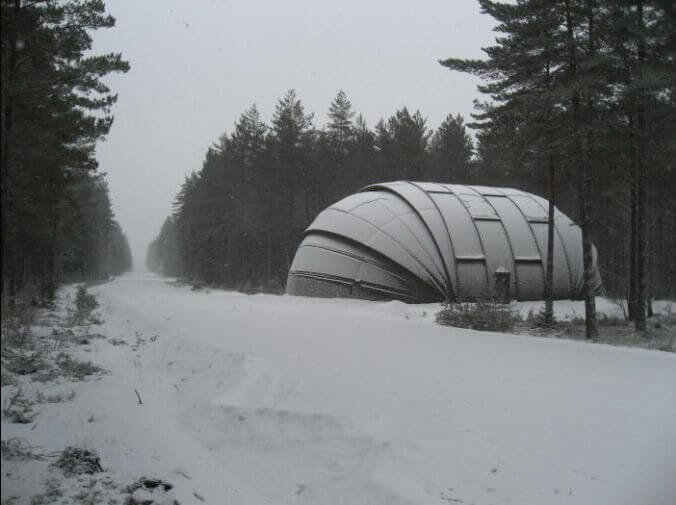
Bas 60 hangar
Of course, the logistical nightmare of getting fuel to 1,000 different bases, or more, is no joke. Civilian airports, at least the big ones, have fuel pipelines similar to oil pipelines, where the refineries pump the fuel directly to the airports. If they had to take trucks, the traffic would be absolutely enormous. I’ll get into fuel requirements for modern planes in the second installment, but suffice to say it’s quite the task.
Smaller, dispersed airbases have the downside of being more expensive to maintain and operate, especially in peacetime. You also need to spend a lot of money to set this system up, and you need more logistical vehicles in both peacetime and wartime to make it all work. Even worse, your generals need to get their feetsies wet going and inspecting them in the middle of winter with all the snow. Poor bureaucrats.
It has the upside that you don’t get your fleet destroyed in a few minutes because Russia launched about 3 long range nuclear missiles at your well known and not secret airbases. You’d think that would be somewhat important, but this is the US military we’re talking about. Rest assured there are no limits to hubris and stupidity.
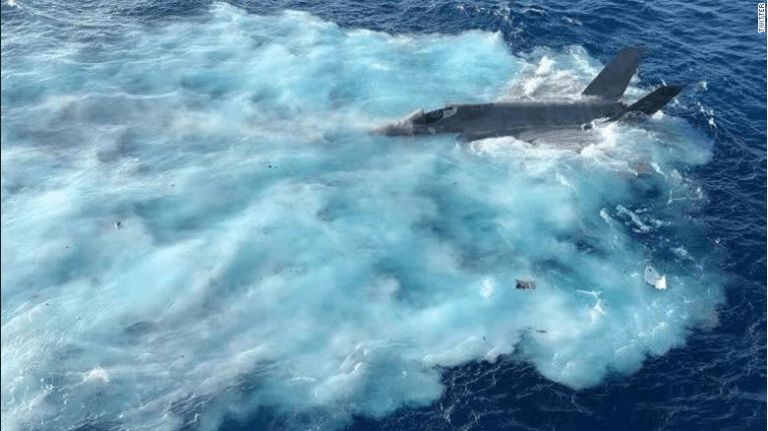
US F-35
One of the best ways to point out that someone is full of shit is to find contradictions in what they say. I do this all the time for the Manlet Cult, but you can do this for Military Industrial Complex shills just as easily. There are two entirely contradictory things they’ll say about modern warfare.
- Long range nuclear ICBM’s can be launched with the press of a button, make their way across the world at a speed of about 7km/s, and land within 350 meters of the intended target 90% of the time and then go boom. Even without that, short range ballistic missiles and cruise missiles can be fired from land or sea at targets up to about 2,000 km away, and blow them up.
- The airbases we’re flying our fighter planes out of are completely indestructible. For some reason.

Russia takes the approach that concrete, pristine airbases are going to get destroyed, and pays the weight and volume penalty on their fighters in order to be able to take off and land from rough fields. The Swedes of all people build small fighters, capable of taking off and landing from roads, along with an entire system created to allow them to operate under serious attack. The US Military has taken a different approach. That approach being:
If you just pretend that, like, the enemy isn’t allowed to destroy your airbases, then they will not be doing that and you’ll be totally fine.

This does not appear to be a very serious approach to warfare.

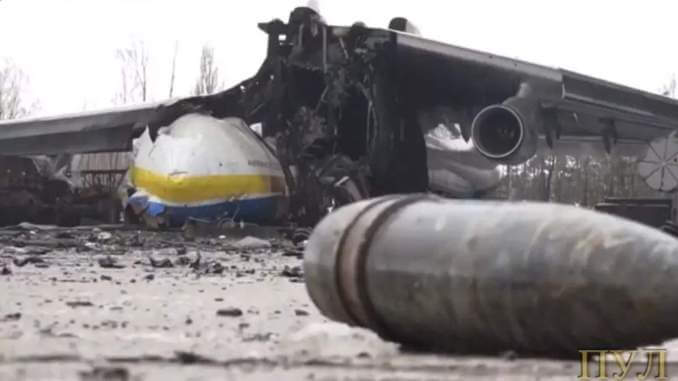
Pretending that “muh Russkies,” or “Chyna Bad” do not have the ability to totally destroy US airpower, which is conveniently operating out of just a few known airbases, does not, and this might shock you, actually prevent them from doing so.
I was as surprised to learn this as you were, but it’s true. Pretending that fighter planes can’t get destroyed on the ground does not protect them from getting destroyed on the ground. Who knew?

Yes, Virginia, the US Military Bureaucracy is an entirely unserious outfit that exists solely to thieve money from the US taxpayer, and other goyim around the world.

These people feel unserious, because they are unserious. But the takeaway is not simply that the US Military Industrial Complex is a complete and utter joke. Well it is that, but I’m talking about fighter planes specifically, and I want you to understand this.
Any fighter plane that cannot take off from rough, unprepared airfields, or, as a consolation prize, random two lane roads, is not an actual weapon of war. Instead, it exists primarily as a weapon to do strikes against the taxpayer. There may be a small secondary role of missile strikes against goat herders, and third world countries that lack the ability to do long range missiles strikes against the airbases these planes are flying out of. Any serious first world country will simply destroy these planes on the ground.

Next time we look at the strategic implications of using planes that consume mor than 25,000+ lbs of fuel in a single hour long mission.









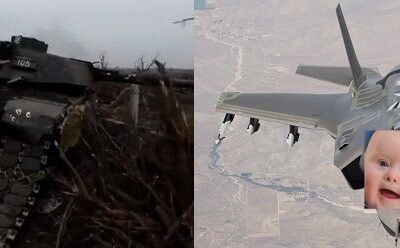





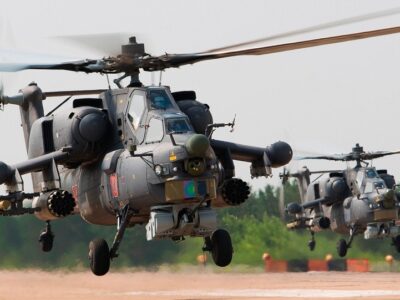
Very interesting – look forward to the next instalments